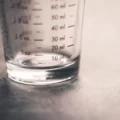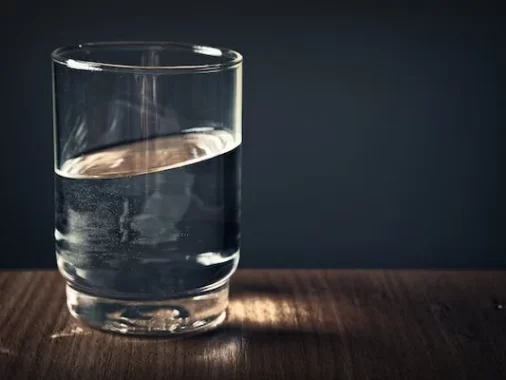In the world of measurements, precision and accuracy are paramount. Whether you’re a chef crafting culinary delights in the kitchen, a chemist working in a laboratory, or simply someone striving for exactness in daily tasks, understanding unit conversions is essential. One common conversion often encountered is the transformation of milliliters (ml) to fluid ounces (fl oz). In this guide, we will delve into the art of converting 90 milliliters to ounces, offering a practical and comprehensive approach
90 milliliters (ml) to fluid ounces (fl oz) yields approximately 3.04 U.S.
Understanding the Units
Before we embark on the conversion journey, let’s acquaint ourselves with the units in play:
Milliliters (ml): Milliliters are a metric unit of volume widely used globally, especially in scientific, medical, and culinary contexts. Precise and versatile, one milliliter equals one-thousandth of a liter.
Fluid Ounces (fl oz): Fluid ounces are predominantly employed in the United States customary and British imperial systems for measuring liquids. Here, we’ll focus on the U.S. customary fluid ounce, which approximates 29.5735 milliliters.
The Conversion Factor
To transform milliliters to U.S. customary fluid ounces, we need a trusty conversion factor:
1 milliliter (ml) ≈ 0.033814 U.S. fluid ounces (fl oz)
This factor establishes that one milliliter is approximately equal to 0.033814 U.S. fluid ounces.
Converting 90 ml to oz
Now, let’s put our newfound knowledge into practice and convert 90 milliliters to fluid ounces step by step:
Step 1: Begin with the quantity in milliliters, which is 90 ml.
Step 2: Apply the conversion factor:
90 ml × 0.033814 fl oz/ml ≈ 3.04326 fl oz
Hence, 90 milliliters is approximately equivalent to 3.04326 U.S. customary fluid ounces.
Common Conversions from ML to OZ
| ML | OZ |
|---|---|
| 1 | 0.033814 |
| 2 | 0.067628 |
| 5 | 0.169070 |
| 10 | 0.338140 |
| 20 | 0.676280 |
| 30 | 1.014420 |
| 40 | 1.352560 |
| 50 | 1.690700 |
| 100 | 3.381400 |
| 250 | 8.453500 |
| 350 | 11.834900 |
| 500 | 16.907000 |
| 750 | 25.360500 |
| 1000 | 33.814000 |
| 1500 | 50.721000 |
| 2000 | 67.628000 |
Practical Applications
The ability to convert milliliters to fluid ounces is a valuable skill in numerous situations:
- Culinary Adventures: When following a recipe that specifies ingredients in milliliters, converting to fluid ounces ensures precise measurements, especially for international dishes.
- Scientific Endeavors: In laboratories, where precision is paramount, accurate conversions are essential for experiments and research.
- Beverage Management: Whether you’re a barista crafting the perfect espresso shot or hosting a gathering, knowing this conversion helps you provide consistent and accurate servings.
FAQs
Does 100ml equal 4 ounces?
No, 100 milliliters (ml) is not equal to 4 fluid ounces (fl oz).
To be precise, 4 fluid ounces is equal to approximately 118.294 milliliters (ml). So, 100 ml is greater than 4 fluid ounces.
How many ounces is 100 ml cup?
A 100 milliliter (ml) cup is approximately equal to 3.38 U.S. customary fluid ounces (fl oz) when rounded to two decimal places.
How many is 2 ounces in a cup?
There are 8 U.S. customary fluid ounces (fl oz) in 1 U.S. customary cup. So, 2 fluid ounces is equal to 1/4 (one-fourth) of a U.S. customary cup.
What is 80 ml of milk?
80 milliliters (ml) of milk is equivalent to approximately 2.71 U.S. customary fluid ounces (fl oz) when rounded to two decimal places.
How much is 50 ml of milk?
50 milliliters (ml) of milk is equivalent to approximately 1.69 U.S. customary fluid ounces (fl oz) when rounded to two decimal places.
Conclusion
Mastering the conversion of 90 milliliters to fluid ounces is both practical and empowering. Armed with the knowledge of the conversion factor and a rounded understanding of the result, you’re well-equipped for various tasks, from the culinary arts to scientific pursuits. Precision and practicality go hand in hand, ensuring that you can confidently handle measurements and conversions in your everyday life. So, the next time you encounter a recipe or a scientific experiment that calls for milliliters, you’ll effortlessly and accurately convert it to fluid ounces, achieving the level of precision your task demands. This guide serves as your trusted companion on this journey of mastery.





